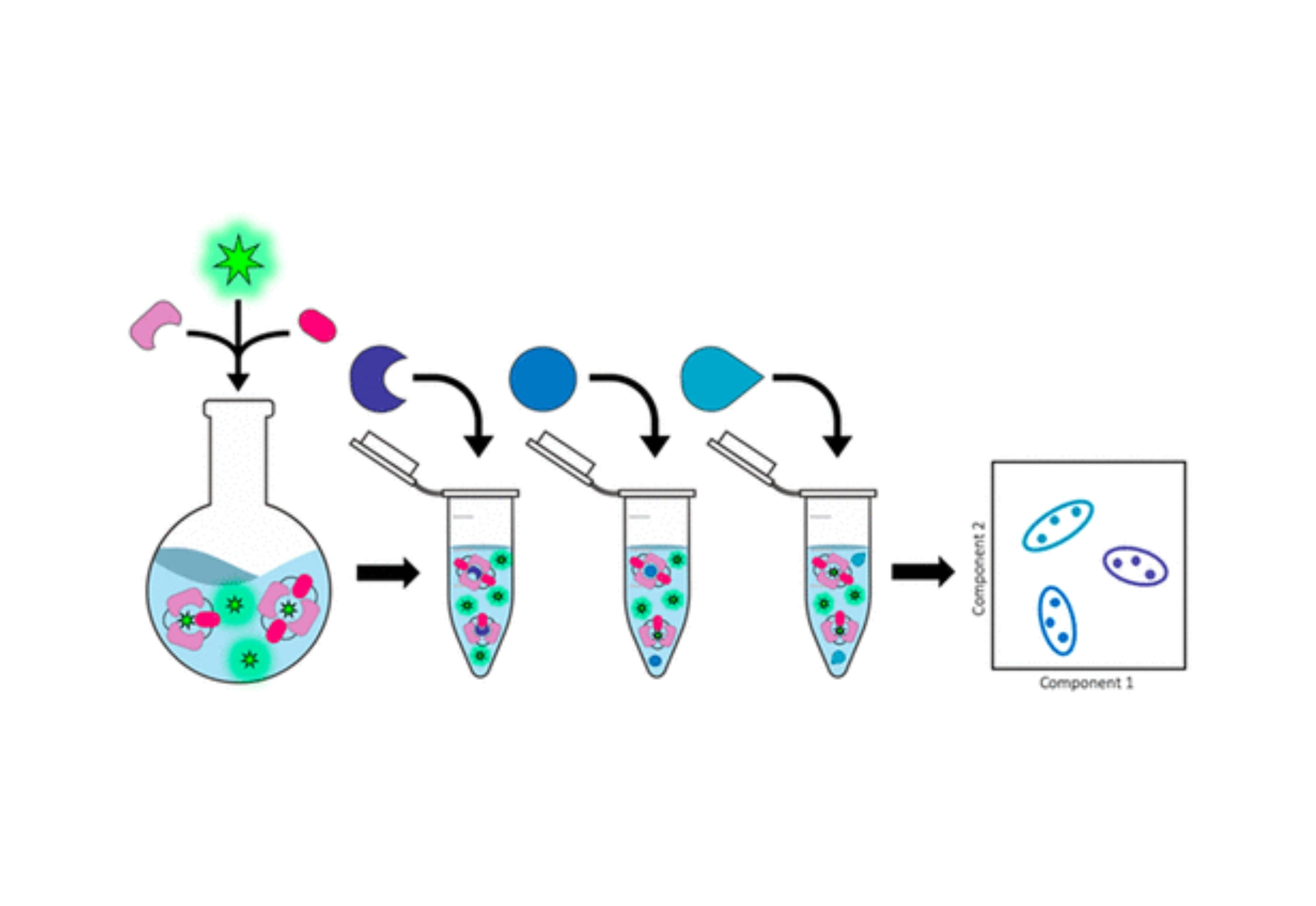Development of “Imprint-and-Report” Dynamic Combinatorial Libraries for Differential Sensing Applications
Abstract
Sensor arrays using synthetic receptors have found great utility in analyte detection, resulting from their ability to distinguish analytes based on differential signals via indicator displacement. However, synthesis and characterization of receptors for an array remain a bottleneck in the field. Receptor discovery has been streamlined using dynamic combinatorial libraries (DCLs), but the resulting receptors have primarily been utilized in isolation rather than as part of the entire library, with only a few examples that make use of the complexity of a library of receptors. Herein, we demonstrate a unique sensor array approach using “imprint-and-report” DCLs that obviates the need for receptor synthesis and isolation. This strategy leverages information stored in DCLs in the form of differential library speciation to provide a high-throughput method for both developing a sensor array and analyzing data for analyte differentiation. First, each DCL is templated with analyte to give an imprinted library, followed by in situ fluorescent indicator displacement analysis. We further demonstrate that the reverse strategy, imprinting with the fluorescent reporter followed by displacement with each analyte, provides a more sensitive method for differentiating analytes. We describe the development of this differential sensing system using the methylated Arg and Lys post-translational modifications (PTMs). Altogether, 19 combinations of 3–5 DCL data sets that discriminate all 7 PTMs were identified. Thus, a comparable sensor array workflow results in a larger payoff due to the immense information stored within multiple noncovalent networks.
Citation
Development of “Imprint-and-Report” Dynamic Combinatorial Libraries for Differential Sensing Applications
Emily E. Harrison, Benjamin A. Carpenter, Lauren E. St. Louis, Alexandria G. Mullins, and Marcey L. Waters
Journal of the American Chemical Society 2021 143 (36), 14845-14854
DOI: 10.1021/jacs.1c07068


